A rebreather in a steel ball going down 800 ft with two man inside
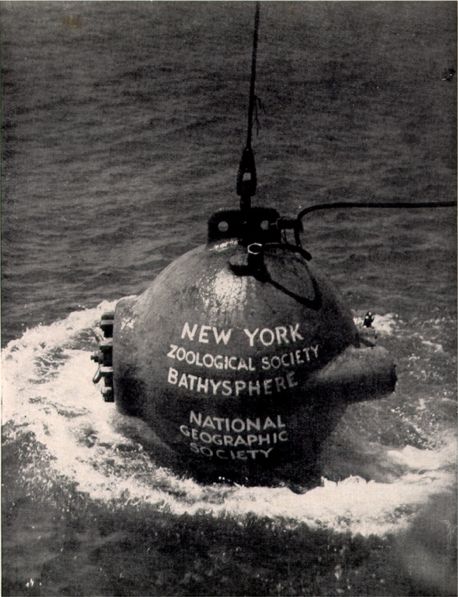
A very remarkable rebreather was the ‘Bathysphere’ from William Beebe and Otis Barton. Recently I managed to collect the original first Dutch edition from 1935 of the book about this rebreather. In this marvellous book, you can read how the above-mentioned explorers descended with a ‘Bathyscaaf’ to 3028 feet.
A wonderful book, where you can find all the details, is devoted to these adventures.
Both men had themselves locked up into a pressure resisted ball to descend by a steal cable to the very depths near the island Nonsuch at the Bahamas.
Attached to the ball of steal, next to the house cable, there was only one cable with a wire for the current for both light and telephone.
It took me a little while before I realised this story is about a very early rebreather system!
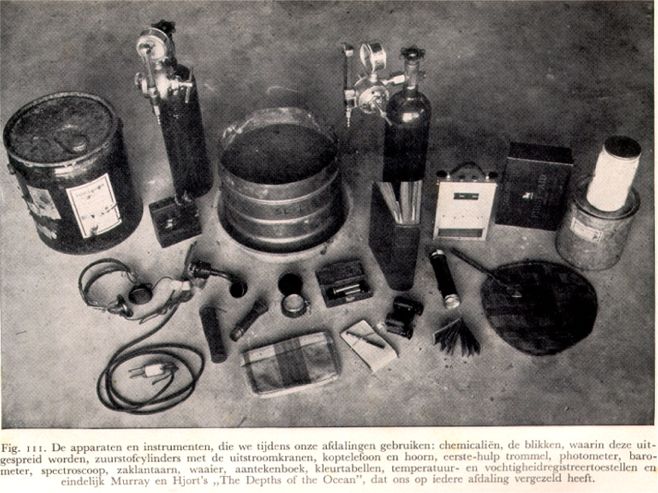
Above you can see the equipment these unbelievable brave voyagers took with them. You can clearly see that two small cylinders of oxygen were taken. The book tells that respiration by the two scientists was completely provided for by the ‘Bathyspere’. They managed to do so by taking Protosorb with them. This material caused a chemical reaction with the carbon dioxide that was exhaled. By adjusting the oxygen supply to the metabolism of the two occupants, a balance was created. The correct amount of oxygen was easily measured by a pressure gauge. As soon as an overpressure was noticed, the flow was turned down.
A touch of genius, but also unbelievable; Imagine, both gentlemen, at a depth 923 meter (3028ft) with a pressure of 93,3 bar, looking out of a little glass window of a steal ball ……
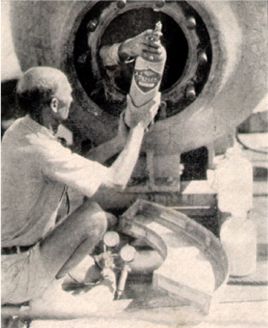
Here you can see that before the main hatch was closed, the oxygen cylinders were handed. Also you can admire the type of sealing material. How, in 1930, was it possible to protect a flange against a pressure of more than 100 bar? Well, relatively simple. Ten very heavy bolts were used and the hatch was greased with white-lead (lead-oxidant with sealing activity = a kind of old fashioned loctite). After that, the bolts were hammered into the ball, which was not at all appreciated by the occupants!
After every pause or modification of the ‘Bathyscaaf’ a test was performed to a planned depth but without crew. About 1931 new windows were placed and the ‘Bathysfeer’ was descended to roughly 400 meter. Back on deck, after loosening the main vane bolt, water was discovered in the Bathyscaaf.
It was detected because of its extreme peeping noise by a mixture of water and air that wanted to get out at a pressure of 41 bar. The deck was cleared to prevent further accidents. This was not completely without reason as after the bolt was further loosened, the noise and power of the water increased…
For the first time it became clear to what enormous pressure the crew had been exposed. If the window was broken during the expedition, not much would have been left of the people inside. Amazing how a remarkable man who has experienced all this also can provide us with an amazing story.
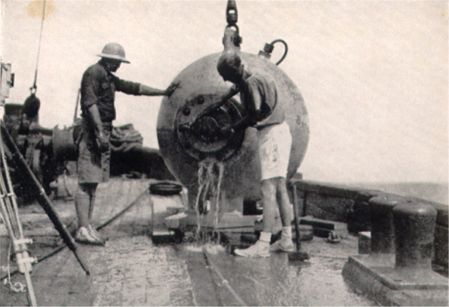
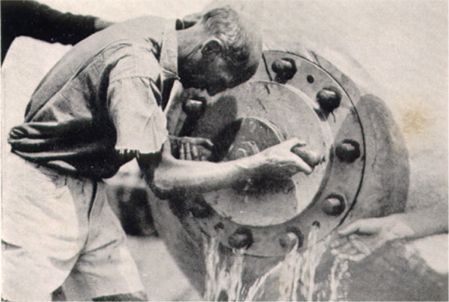
This turned out to be not entirely unjustified, because after the bolt was loosened further, the sound and the force of the water increased.
It was here that the immense pressure to which the passengers were subjected became clear for the first time. If a window had broken during the expedition, not much would have remained of the passengers. A special person who would survive such an implosion!
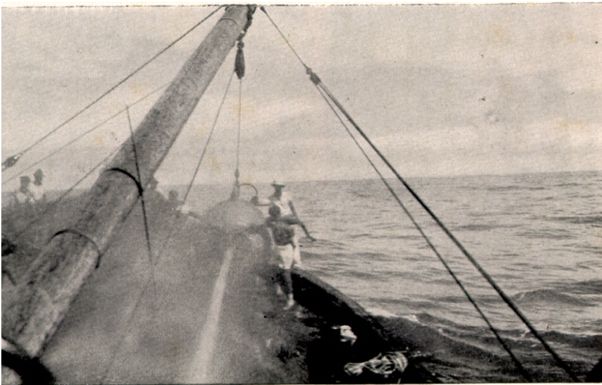
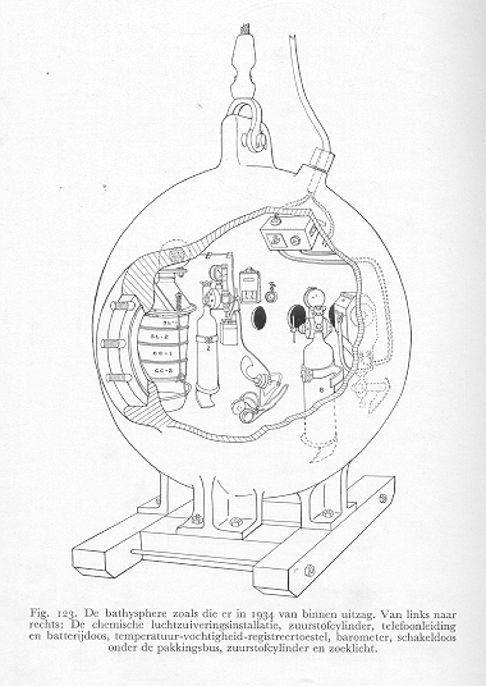
This is an illustration of what the bathysphere looked like in 1934, four years after the first dive. The interior had been changed quite a bit. Note the spotlight in front of the right window. The Protosorb was later placed in a can with a fan above it so that there was a constant flow through the grains. How do we know this from ….
Here both adventurers/scientists/heroes in their bathysphere. Only 30 years later, Jacques Picard would improve Beebe’s depth record to 11,000 metres! Also in a bathysphere.
It was called The Trieste.
Voor gedetailleerde informatie over Beebe’s avonturen zie de volgende website;
LINK TO DEDICATED WEBSITE
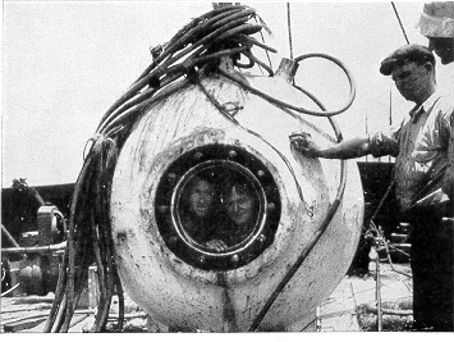
Source; 800 metres below sea level; William Beebe 1935

Therebreathersite was founded by Jan Willem Bech in 1999. After a diving career of many years, he decided to start technical diving in 1999. He immediately noticed that at that time there was almost no website that contained the history of closed breathing systems. The start for the website led to a huge collection that offered about 1,300 pages of information until 2019. In 2019, a fresh start was made with the website now freely available online for everyone. Therebreathersite is a source of information for divers, researchers, technicians and students. I hope you enjoy browsing the content!
